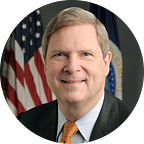The Importance of the Affordable Care Act for Rural America
National Rural Health Day brings attention to the unique challenges and opportunities for health and well-being in rural communities. As we recognize these challenges and celebrate the gains we have made in improving health in rural America, I want to remind individuals and families in rural areas that the healthcare Health Insurance Marketplace open enrollment period is happening now, and affordable healthcare coverage is available on HealthCare.gov.
When it comes to healthcare, rural Americans have historically faced fewer options and more limited access. Many rural families don’t have access to affordable health insurance through an employer because they are self-employed as farmers, ranchers, or business owners and entrepreneurs. The average rural family used to pay nearly 50 percent of all health costs out of pocket. When the recession made times particularly tough, many families faced the painful choice of paying higher costs or forgoing needed care.
In March 2010, President Obama signed the historic Affordable Care Act (ACA) into law, helping to build a better quality of life for rural communities by lowering healthcare costs, providing more choices, enhancing quality of care, and guaranteeing access to care for all. The ACA ended discrimination against people with pre-existing conditions, and it eliminated annual caps on benefits and lifetime limits.
One fifth of America’s population lives in rural communities, but just ten percent of doctors practice there. The ACA is addressing this challenge by expanding resources for community health centers, where 11.4 million rural Americans get access to primary and preventive care. Here at USDA, we have invested more than $3 billion since 2009 to strengthen health infrastructure in rural areas, building rural hospitals and health clinics and expanding access to healthcare in remote rural areas through telemedicine.
Since the ACA’s passage, 20 million Americans now have health insurance who didn’t have it before, and we’ve seen the national uninsured rate decline to under 9 percent — the lowest it has ever been. Thanks to provisions that created insurance Marketplaces and facilitated Medicaid expansion, rural individuals have seen large coverage gains under the ACA; the portion of rural Americans with insurance has increased by about 8 percentage points. Among rural individuals, the share without access to a personal physician has dropped by 3.4 percentage points, and the share unable to afford needed care has dropped by nearly 6 percentage points.
But many rural Americans still need health insurance. Fortunately, about 2.6 million uninsured rural Americans are potentially eligible for Marketplace coverage. Eighty-eight percent of them (2.3 million people) may qualify for tax credits to help them afford their premiums. Even with higher premium growth this year, premiums for Marketplace coverage in 2017 will be roughly in line with, or a little below, what the Congressional Budget Office predicted when the law passed. Most consumers will be able to select a plan for $75 or less per month thanks to financial assistance.
We are headed in the right direction, but we still have work to do. Marketplace enrollment began November 1st and runs until January 31st, with December 15th being the deadline for coverage that starts Jan 1st. I encourage you to check out your options at HealthCare.gov today and get covered.
November 17th marks National Rural Health Day. Listen to the Secretary’s message here about the importance of rural health and enrolling in health care through Healthcare.gov
